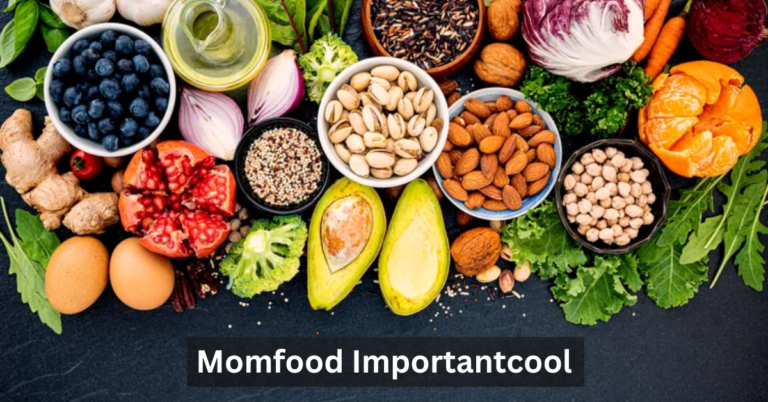Grain Mill Pax Dei: A Guide to Sustainable and Nutrient-Rich
For many home cooks and bakers, the Grain Mill Pax Dei offers a return to an ancient and sustainable way of processing food. A grain mill brings the full nutritional profile of whole grains into the kitchen and provides an eco-friendly option for baking and cooking with freshly ground flour. This guide covers everything you need to know about the Grain Mill Pax Dei, from its historical roots to choosing the best model for your needs and incorporating freshly milled flour into delicious recipes.
The Grain Mill Pax Dei is a modern grain mill designed to embrace traditional milling techniques while offering the convenience and durability required for home use. Its appeal lies in the way it combines manual and electric options, allowing users to customize their grinding process while reaping the benefits of fresh, nutrient-dense flour. Whether you’re using a manual grain mill for its meditative, hands-on experience or opting for an electric grain mill for efficiency, the Grain Mill Pax Dei meets a variety of household needs.
Historical Inspiration and the “Pe|ace of God” Concept
The term Pax Dei, or “Peace of God,” is rooted in medieval history, symbolizing a commitment to peace, community, and sustainability. Grain mills were historically important, supporting entire communities by producing life-sustaining flour. The Grain Mill Pax Dei embodies this philosophy, offering a sustainable and environmentally friendly tool that connects users to ancient traditions of food preparation.
Why Choose a Grain Mill?
With the Grain Mill Pax Dei, you gain control over the quality and nutrition of your flour. Unlike commercial flour, which may be processed with additives and preservatives, home-milled flour preserves essential nutrients like fiber, vitamins, and minerals found in whole grains. Additionally, the Grain Mill Pax Dei is a long-term investment that promotes both sustainability and cost savings, as freshly ground flour can be used in a wide variety of recipes at a fraction of the store-bought cost.
The History of Grain Mills
Grain milling has a rich history that dates back to ancient civilizations. While today’s grain mills offer efficiency, the principles behind milling remain largely the same.
From Ancient Grinding Stones to Modern Mills
Early grain mills were nothing more than grinding stones, used to crush and mill grains manually. Over time, civilizations introduced various techniques to improve grinding, such as stone mills powered by animals or water. The Grain Mill Pax Dei celebrates this evolution, combining the ancient art of grinding with modern design.
Evolution of Milling: Stone, Water, and Industrial Revolutions
The transition from stone and water mills to industrialized milling marked a significant change, allowing for mass production but at the cost of nutrient quality in flour. By embracing the Grain Mill Pax Dei, modern users reclaim the lost benefits of whole grains, grinding them fresh at home with either manual or electric mechanisms.
The Modern Revival of Traditional Milling
Today’s home bakers and cooks are increasingly aware of the benefits of sustainable kitchen tools and whole grain nutrition. This revival has sparked interest in traditional milling techniques and tools like the Grain Mill Pax Dei, which offers the best of both worlds: ancient methods and modern ease.
How the Grain Mill Pax Dei Works
Understanding how the Grain Mill Pax Dei operates can help you make the most of its features and maximize the quality of your freshly ground flour.
Components of the Grain Mill Pax Dei
Key components include the hopper, which holds the grain; the grinding plates (stone or metal) that crush the grain; and the grain bin, which collects the flour. These parts work together to ensure consistent milling, whether you’re making flour from wheat, oats, corn, or spelt.
Step-by-Step Milling Process
- Prepare the Grain: Add the desired amount of grain to the hopper.
- Set the Grind Coarseness: Adjust the grinding mechanism for coarse or fine flour.
- Start Milling: Turn the handle on a manual mill or activate the motor on an electric model.
- Collect the Flour: Gather fresh flour from the grain bin, ready for baking or cooking.
Manual vs. Electric Grain Mill Pax Dei Models
The manual grain mill offers a hands-on experience and a workout, ideal for users who enjoy a slow, meditative process. In contrast, the electric model provides speed and efficiency, perfect for those who need a quick batch of flour for recipes like bread or pancakes.
Benefits of Using a Grain Mill Pax Dei
Nutritional Advantages of Freshly Ground Flour
Freshly milled flour retains essential nutrients, unlike store-bought flour, which loses vitamins, minerals, and fiber during processing. By using the Grain Mill Pax Dei, you gain all the health benefits of whole grain milling at home.
Sustainability and Environmental Impact
By milling grains at home, you reduce the carbon footprint associated with processed foods. The Grain Mill Pax Dei supports a sustainable lifestyle by limiting packaging waste and the energy required for commercial flour production.
Cost-Savings Over Time
An initial investment in a Grain Mill Pax Dei leads to long-term savings. Bulk grains are typically cheaper than processed flour, making this mill a cost-effective addition to the home.
How to Choose the Right Grain Mill Pax Dei for Your Needs
Key Factors: Manual vs. Electric, Stone vs. Metal Grinding Mechanisms
Consider whether you prefer a manual or electric grain mill based on your lifestyle and needs. Stone grinding is ideal for maintaining the traditional method, while metal grinding can provide a finer consistency.
Capacity, Adjustability, and Portability
Some models of the Grain Mill Pax Dei come with adjustable grind settings and different sizes, so you can find a model that fits your kitchen and meets your desired flour consistency.
Choosing a Model Based on Household Needs
For frequent bakers, an electric mill may be the best option, while a manual mill is great for occasional use or as a backup in emergencies. Choose the one that best matches your household’s baking habits.
Getting Started with Your Grain Mill Pax Dei
Preparation and Initial Cleaning
Clean your mill before first use to remove any residues. This step ensures the flour remains pure and free from contaminants.
Selecting and Preparing Grains for Milling
Choose whole grains like wheat, oats, or spelt for milling. Make sure the grains are dry and free of debris before placing them in the hopper.
Setting Up and Adjusting the Grind Coarseness
Whether you’re making coarse flour for bread or fine flour for pancakes, adjust the grinding mechanism for the desired consistency.
Care and Maintenance for Long-Lasting Performance
Routine Cleaning Tips
Regular cleaning is essential for keeping the Grain Mill Pax Dei in top shape. Remove residue from the grinding plates and hopper after each use.
Lubrication and Plate Inspection
Lubricate moving parts as needed, and check grinding plates periodically for wear to ensure consistent milling.
Storage Recommendations
Store the mill in a dry place to prevent rusting or moisture damage. Proper storage ensures the mill remains functional for years to come.
Common Troubleshooting Tips
Solutions for Common Issues (Jamming, Uneven Grinding)
If your mill jams, try using a different grain setting or cleaning the grinding plates. Uneven grinding may require an adjustment of the grind coarseness.
Ensuring Smooth Operation: Tips for Both Manual and Electric Models
Keep your mill in good working order by regularly checking for jams, and only use grains suitable for milling in your specific model.
Recipes and Uses for Freshly Ground Flour
Delicious Homemade Bread Recipe
Fresh flour elevates bread recipes, providing a fuller, richer taste. Try baking a simple whole grain loaf for a nutritious addition to meals.
Other Uses: Pancakes, Pizza Dough, and More
Fresh flour can be used in a wide array of recipes beyond bread, including pancakes, pizza dough, and pastries.
Tips for Incorporating Fresh Flour in Everyday Cooking
Experiment with fresh flour in various recipes to discover the difference in flavor and texture.
Is a Grain Mill Pax Dei Worth the Investment?
Long-Term Savings on Flour and Grains
The Grain Mill Pax Dei offers substantial savings, as whole grains are typically more affordable and long-lasting than processed flour.
Health and Environmental Benefits vs. Cost
Beyond cost, the health and environmental benefits of milling at home are compelling reasons to invest in a Grain Mill Pax Dei.
Reader Testimonials and Experiences
Many users report that the mill provides a satisfying, hands-on experience that brings them closer to their food and adds value to their kitchen.
Conclusion
The Grain Mill Pax Dei is more than a kitchen tool; it’s a commitment to sustainability, nutrition, and tradition. By investing in this mill, you not only improve your health but also reduce your environmental footprint, supporting a lifestyle that values whole, unprocessed foods The Grain Mill Pax Dei stands out as a tool for health-conscious and eco-friendly individuals. By milling grains at home, users embrace the sustainability of the past while harnessing the convenience of modern technology. Whether used in manual or electric form, this mill provides fresher, more flavorful, and nutrient-rich flour than what’s typically found on store shelves.
Frequently Asked Questions
Is freshly milled flour healthier than store-bought flour?
Yes, freshly milled flour retains more nutrients, including essential fiber, vitamins, and minerals that may be lost in processed flour. Milling grains at home also provides higher antioxidant levels and natural oils, which enhance the nutritional profile and health benefits of whole grain products.
What types of grains can be used in the Grain Mill Pax Dei?
The Grain Mill Pax Dei accommodates a range of grains, including wheat, oats, corn, spelt, and even specialty grains. However, always check the manufacturer’s guidelines to ensure compatibility.
How does a manual mill differ from an electric grain mill?
A manual mill requires hand-cranking, offering a traditional experience and often lower maintenance costs. Electric mills, on the other hand, use a motor for faster, effortless grinding, making them ideal for high-frequency use and large quantities.
Is it cost-effective to mill your grains at home?
Absolutely. The upfront cost of the Grain Mill Pax Dei can be offset by the long-term savings on store-bought flour, especially for those who bake frequently or in bulk.
What are some tips for cleaning and maintaining my Grain Mill Pax Dei?
Regular cleaning of grinding plates, lubrication, and storage in a dry location will extend the life of your grain mill. Always refer to the product manual for specific care recommendations based on your model.
Stay in touch to get more updates & alerts on EroMe! Thank you






